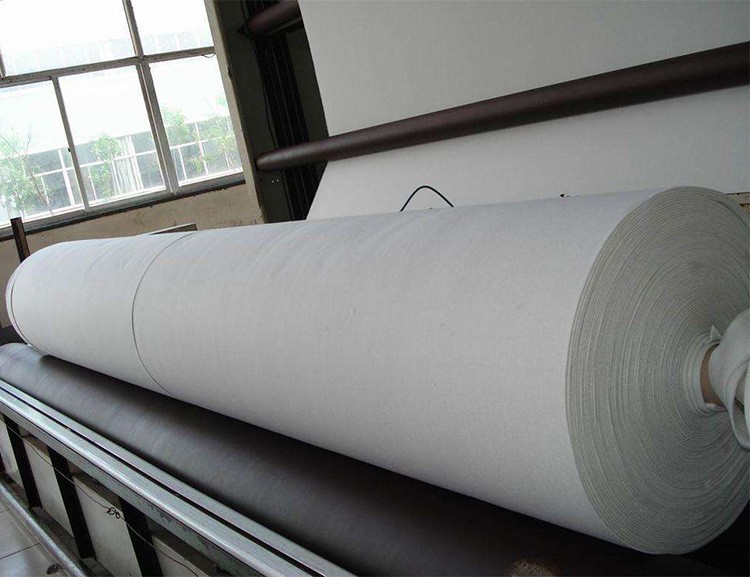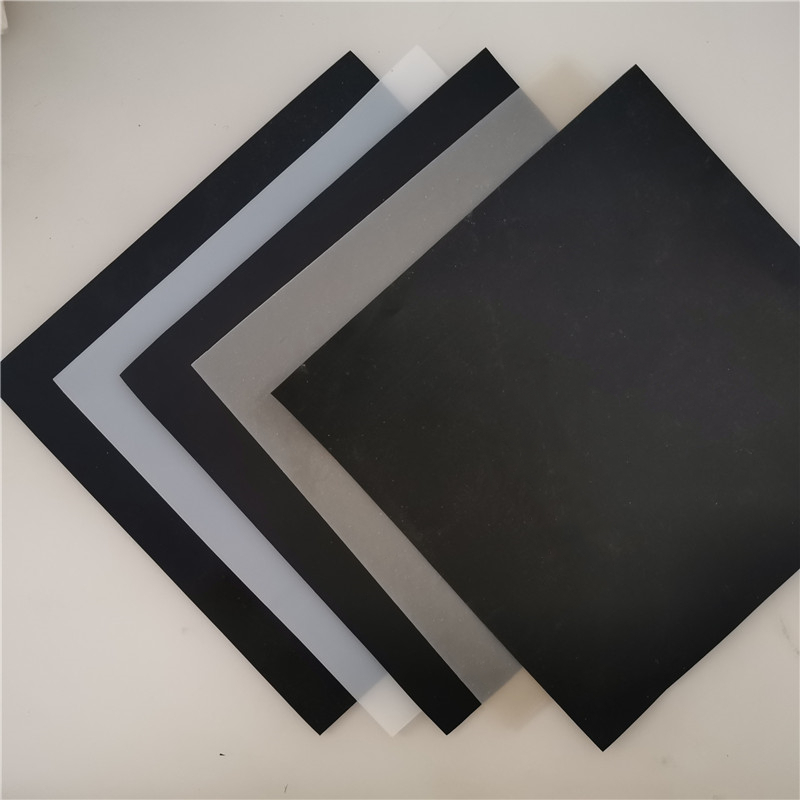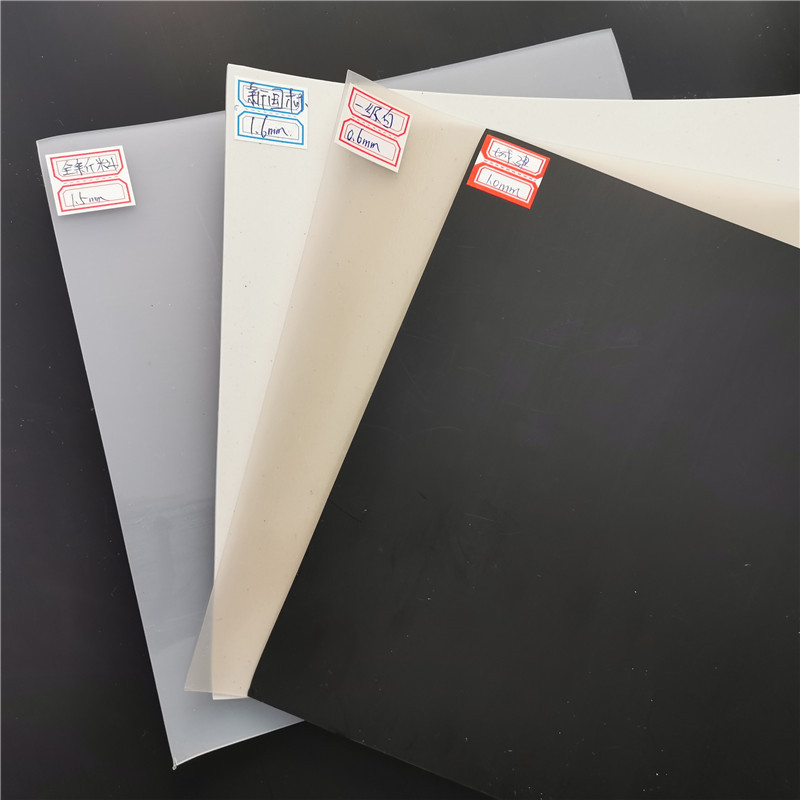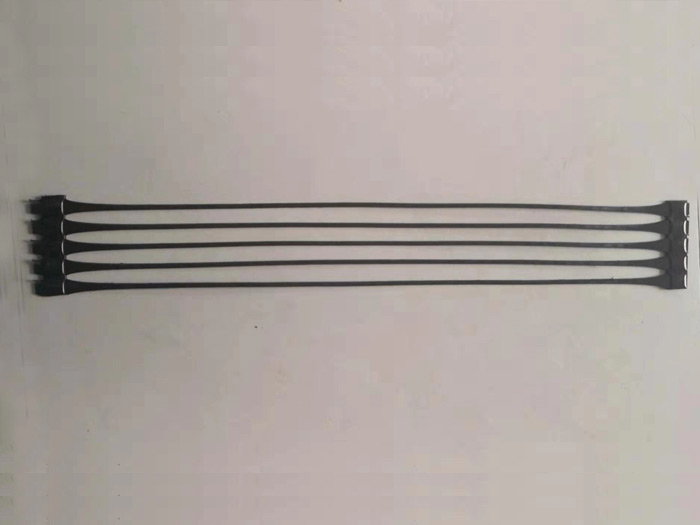
产品介绍:
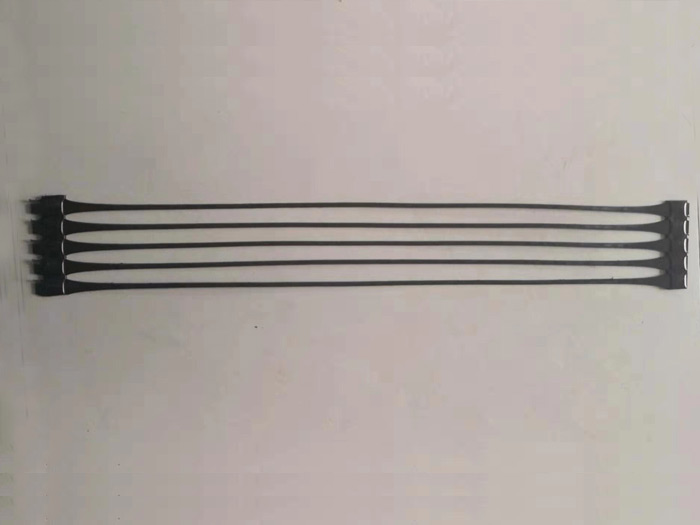
Unidirectional tensile geogrid is a kind of high-strength geotechnical material mainly made of high-molecular polymers, with
certain anti-ultraviolet and anti-aging additives added. Through unidirectional stretching, the originally scattered chain-like
molecules are reoriented and arranged in a linear state. Then, it is extruded and pressed into thin plates, punched into regular
hole nets, and finally stretched longitudinally. During this process, the polymer is made into a directional linear state and forms
a long elliptical network structure with uniform distribution and high node strength. This structure features a relatively high
tensile strength and tensile modulus, with a tensile strength reaching 100-200 mpa, approaching the level of low-carbon steel
and significantly outperforming traditional or existing reinforcing materials. It provides an ideal force-bearing and diffusing
interlocking system for the soil. This product has a high tensile strength (>150Mpa), is suitable for various soils, and is currently
widely used as a reinforcing and strengthening material.
Function and application
Unidirectional geogrids are used to reinforce weak foundations: Geogrids can rapidly enhance the bearing capacity of the
foundation, control the development of settlement, and the lateral confinement effect on the road base can effectively distribute
the load to a wider subbase, thereby reducing the thickness of the base, lowering the project cost, shortening the construction
period, and extending the service life.
2. Unidirectional geogrids for cement pavements: Geogrids are laid at the bottom of the cement pavement, which can reduce
the depth of rutting, extend the fatigue life of the pavement, and also reduce the thickness of the cement pavement to save costs.
3. Unidirectional geogrids are used to reinforce embankment slopes and retaining walls. Traditional embankments, especially
high ones, often require overfilling and the edges of the shoulders are not easily compacted, which leads to frequent occurrence
of slope collapse and instability due to rainwater infiltration in the later stage. At the same time, a relatively gentle slope is needed,
which occupies a large area. Retaining walls have the same problem. Using geogrids to reinforce embankment slopes or retaining
walls can reduce the occupied area by half and extend the service life. Reduce the cost by 20% to 50%.
4. Unidirectional geogrids are used to reinforce river and sea embankments: They can be made into gabions and used in conjunction
with geogrids to prevent the embankment from collapsing due to seawater erosion. Gabions have permeability, which can reduce
the impact of waves, extend the service life of the embankment, save human and material resources, and shorten the construction period.
5. Uidirectional geogrids are used in landfill sites: The combination of geogrids and other geosynthetic materials in the treatment
of landfill sites can effectively solve problems such as uneven settlement of the foundation and the emission of derived gases,
and can maximize the storage capacity of the landfill site.
The special application of unidirectional geogrids: low-temperature resistance. The low-temperature resistant geogrid has met
all the performance requirements after 200 repeated cold and hot cycles at -45 ℃ to -50 ℃. It has also been tested by the
Qinghai-Xizang Railway and is suitable for poor geological conditions such as less frozen soil, rich frozen soil and high ice content
frozen soil in the north.



